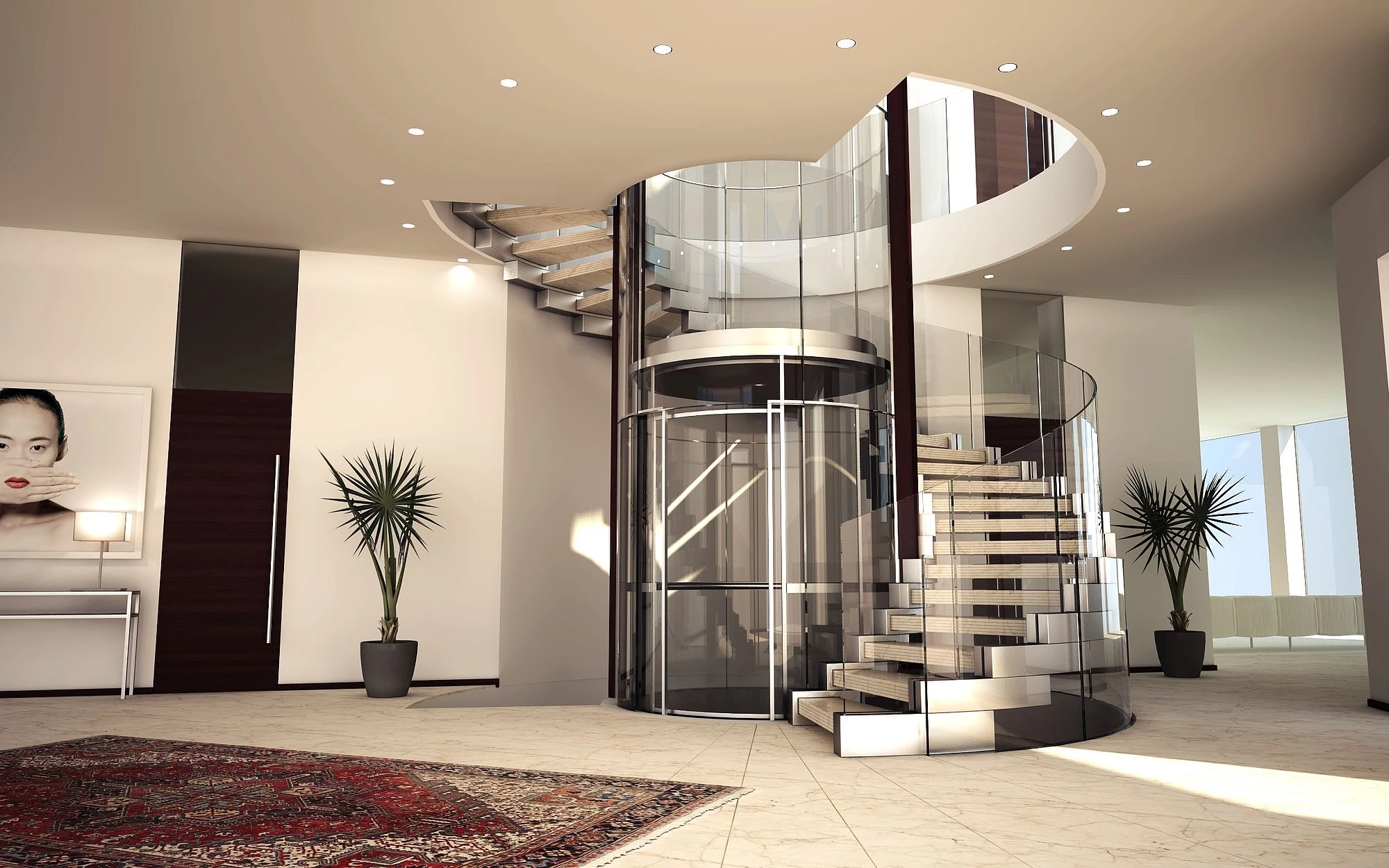작품/작가
Round Elevator – A Design-Forward Approach to Vertical Mobility
0 0 0  easymoveslift
easymoveslift
In contemporary architecture, where space efficiency and aesthetics often go hand in hand, vertical transportation systems are no longer just functional elements—they are part of the design narrative. Traditional elevator systems, particularly those with square or rectangular shafts, can sometimes limit creative freedom and introduce spatial inefficiencies.
Theround elevator, by contrast, offers a visually seamless and space-efficient alternative, particularly well-suited for buildings with curved layouts, atriums, or where 360-degree visibility is desired. This article explores the role of round elevators in modern building design, with a focus on structure, application, and spatial advantages.
What Is a Round Elevator?
Around elevator—sometimes referred to as acircular lift elevator orcurved elevator—is a vertical transportation system designed with a cylindrical shaft and cabin. It often incorporates transparent materials like glass and is used in both residential and commercial settings where architectural integration and visual openness are important.
Unlike traditional elevators, the round version is typically freestanding or placed within circular enclosures, making it ideal for environments where aesthetics, natural light, and open space are design priorities.

Space Planning and Structural Integration
The circular footprint of a round elevator offers several advantages in terms of spatial design. It allows for better use of curved or central areas of a building where square shafts would waste space or clash visually. In buildings with atriums, spiral staircases, or panoramic lobbies, round elevators provide smoother spatial alignment.
Because of their symmetrical form, these elevators also tend to be easier to integrate into radial or polygonal floor plans. Architects working on irregular or organically shaped buildings often find round elevators to be more adaptable than conventional models.
Key Design Features and Technical Considerations
Round elevators can vary in material, drive systems, and cabin finishes, but they commonly share the following characteristics:
Circular Shaft and Cabin:Promotes space-efficient integration into curved spaces.
Glass Construction:Frequently used for apanoramic elevatorexperience, offering unobstructed views.
Customizable Door Placement:Allows single or double-sided door configurations.
Compact Equipment Layout:Motor and control systems are often installed overhead or laterally, allowing for minimal pit or machine-room space.
Quiet Operation:Many models use traction or roped hydraulic drives designed for low-noise performance.
The use of transparent panels and open visibility improves wayfinding in public spaces and creates a lighter, more inviting environment—especially in high-traffic or hospitality settings.
Use Cases and Applications
Round elevators are commonly found in buildings where design plays a central role in user experience. They are often specified for:
High-End Residences:Particularly villas, penthouses, or duplex apartments.
Commercial Showrooms and Malls:Serving as both functional transport and architectural centerpiece.
Hotels and Resorts:Especially in lobbies with large atriums or sea-view installations.
Museums and Cultural Centers:Where visibility and minimal visual disruption are important.
Corporate Headquarters:To complement glass architecture and modern design language.
These elevators serve both form and function, making them suitable for projects where spatial aesthetics and usability are equally valued.
Materials and Construction Standards
The construction of a round elevator typically involves:
Laminated Safety Glass:Used for walls and sometimes the ceiling and floor for a full-glass effect.
Stainless Steel or Anodized Aluminum Frames:Ensures strength, durability, and corrosion resistance.
Curved Doors and Guides:Precisely engineered for smooth entry and exit.
Smart Controls:Optional integration of touch panels, automatic lighting, and voice activation.
When specifying a round elevator, compliance with local elevator codes and accessibility standards (such as EN 81, ADA, or ISO equivalents) must be ensured. Fire resistance, emergency features, and ventilation are also essential considerations in enclosed designs.
Advantages of Round Elevators
From a technical and architectural standpoint, round elevators offer several practical and aesthetic benefits:
Efficient Use of Irregular Spaces:Ideal for curved walls, central lobbies, or corners.
Visual Lightness:Especially when constructed with glass, they minimize structural intrusion.
Improved Passenger Experience:Open visibility creates a sense of spaciousness.
Design Versatility:Cabin interiors and exteriors can be adapted to fit both modern and classical architecture.
Low Pit and Overhead Requirements:Many round elevators can be installed with shallow pits or as pitless models.
These advantages make them a relevant choice in projects where conventional elevators would either compromise design or require more structural modification.
Conclusion
Round elevators represent a compelling evolution in vertical transportation design, especially for projects that demand architectural integrity alongside functional efficiency. Their circular form not only enables better use of space in complex layouts but also adds a visually distinct and elegant element to any building interior.
Whether implemented in a private residence or a public space, the round elevator aligns with contemporary values in architecture: openness, adaptability, and design-driven utility. For architects and planners working with non-linear layouts or aiming to enhance the spatial narrative of a structure, thismodern lift solutionoffers a well-rounded approach to both movement and form.
관련 웹소설
댓글 0
이 토픽에 대해 어떻게 생각하시나요? 로그인하기




제일 먼저 댓글을 달아보시겠어요?